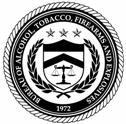 |
The ATF enforces federal laws on firearms, arson, and explosives, and criminal laws on alcohol and tobacco smuggling and diversion. The ATF's responsibilities include regulating the firearms and explosives industries and providing training and support to federal, state, local, and international law enforcement partners. The ATF's nearly 5,000 special agents, inspectors, regulatory specialists, forensic auditors, laboratory technicians, and other personnel work primarily in 23 field divisions across the 50 states, Puerto Rico, the U.S. Virgin Islands, and Guam. Foreign offices are located in Mexico, Canada, Colombia, and France. |
National Integrated Ballistic Information Network Program
Through the National Integrated Ballistic Information Network (NIBIN) program, the ATF provides Integrated Ballistics Identification System equipment to state and local law enforcement agencies. The agencies' firearms examiners and technicians use the equipment to obtain computerized images of the unique marks made on bullets and cartridge casings when firearms are discharged. The images are electronically compared to other images in the system to determine whether a firearm matches one used in another criminal case. NIBIN enables law enforcement agencies to quickly discover links between crimes, some of which would not have been identified without this technology.
At the request of the ATF, the OIG's Audit Division assessed the ATF's management and implementation of NIBIN. The OIG found that NIBIN had been fully deployed with the capability to compare ballistic images on a national level. However, we concluded that ballistics equipment had not been deployed to the sites that could best utilize it and the nationwide search capability of NIBIN was rarely used. We also found that the ATF had not taken steps to maximize the entry of evidence into NIBIN. In addition, the audit determined that: 1) many law enforcement agencies were not participating in the program, 2) the ATF was not promoting the program enough to maximize participation, 3) many law enforcement agencies were not maximizing the amount of firearms evidence collected and submitted for entry into NIBIN, 4) a high-volume law enforcement agency was not reviewing high-confidence matches in NIBIN, and 5) many law enforcement agencies were not adequately managing backlogged evidence.
To improve the operation and success of NIBIN, we made 12 recommendations to the ATF. The ATF concurred with all of the recommendations.
Review of the ATF's Disciplinary System
In September 2005, the OIG's Evaluation and Inspections Division reported on ATF investigations of employee misconduct and discipline of employees when misconduct is confirmed. The report was the fourth in a series of reviews of Department components' disciplinary systems.
The OIG found that the ATF did not ensure that all misconduct was properly reported or thoroughly investigated. In addition, the documentation and tracking of misconduct cases was incomplete and inconsistent, which prevented the ATF from ensuring that consistent penalties were proposed. Decisions to mitigate proposed discipline were not always sufficiently justified and the implementation of penalties for misconduct was not always documented. The OIG also reported that the ATF had no timeliness goals or standards to measure the disciplinary system's performance. The average time the ATF took to investigate and adjudicate misconduct cases, however, was similar in range to the three other Department components that the OIG previously reviewed.
At the ATF's request, the OIG reviewed a pilot project the ATF has been using since June 2003 for its more serious misconduct cases. In the pilot project, a single "Bureau Deciding Official" makes final decisions on proposed discipline, which under the ATF's traditional system these disciplinary decisions were made by various local managers. The OIG determined that the pilot project has produced final discipline decisions that are more consistent, reasonable, and timely than those imposed through the ATF's standard process, and we concluded that making the Bureau Deciding Official process permanent is warranted.
The OIG made nine recommendations to help the ATF improve its disciplinary system, including to have all investigations of alleged misconduct be conducted or reviewed by the ATF Investigations Division before a case is adjudicated; establish a time period for how far back prior discipline should be considered; eliminate the policy of allowing the same individual to serve as the proposing and deciding official for the same misconduct case; and establish policies and procedures to ensure that discipline imposed is applied consistently. The ATF generally concurred with the report's recommendations and is taking steps to implement them.
The following is an example of a case involving the ATF that the OIG's Investigations Division investigated during this reporting period:
- An investigation by the OIG's Philadelphia Area Office led to the arrest and guilty plea of a former ATF contract background investigator in the District of New Jersey on charges of theft of government funds. OIG investigators developed evidence that the background investigator falsified investigation reports by not conducting the required interviews. She subsequently submitted fraudulent payment vouchers to the ATF and received payment. The investigator was sentenced to 3 years' probation, fined $2,000, and ordered to forfeit $5,500.
The OIG is evaluating an ATF initiative to reduce violent firearms crimes in selected cities across the United States. This review will assess whether the ATF effectively implemented the Violent Crime Impact Teams and whether the teams are achieving the program's stated goal of reducing violent crime.
The ATF operates three forensic laboratories that examine firearms, tool marks, fire debris, explosives materials, fingerprints, questioned documents, and trace evidence. During FY 2004, the laboratories processed over 3,000 evidence submissions. The OIG is evaluating whether the laboratories manage workloads effectively to provide timely services to ATF field divisions. Our audit is following up on audit findings reported in 2001 by the Department of Treasury OIG, which was responsible for auditing the ATF until its transfer to the Department in 2003.


